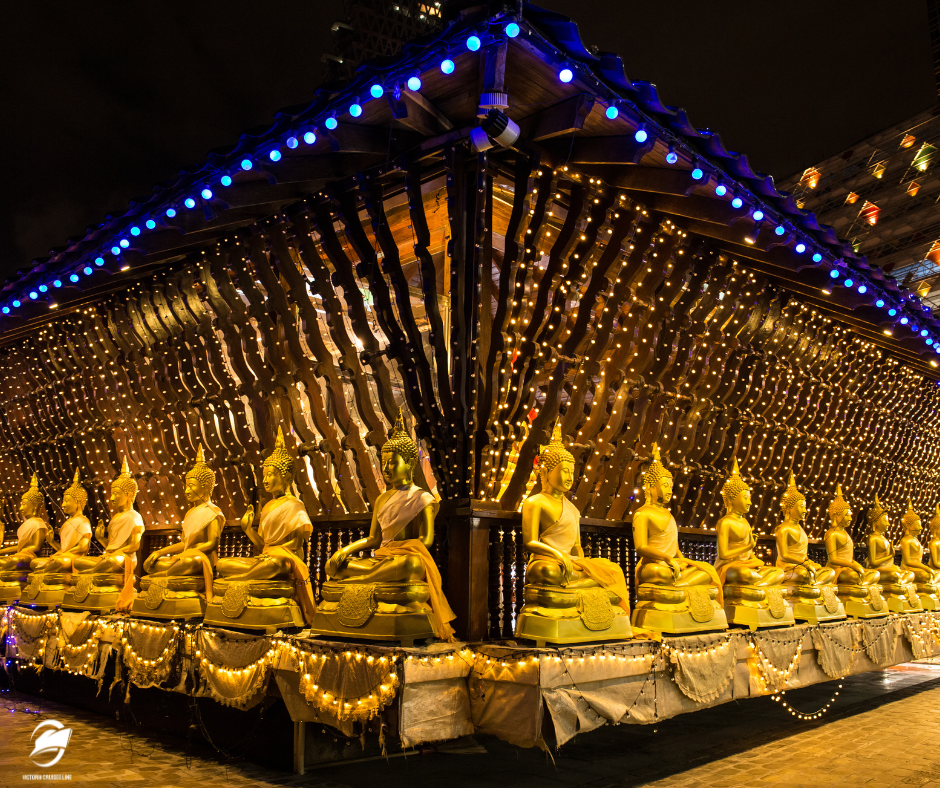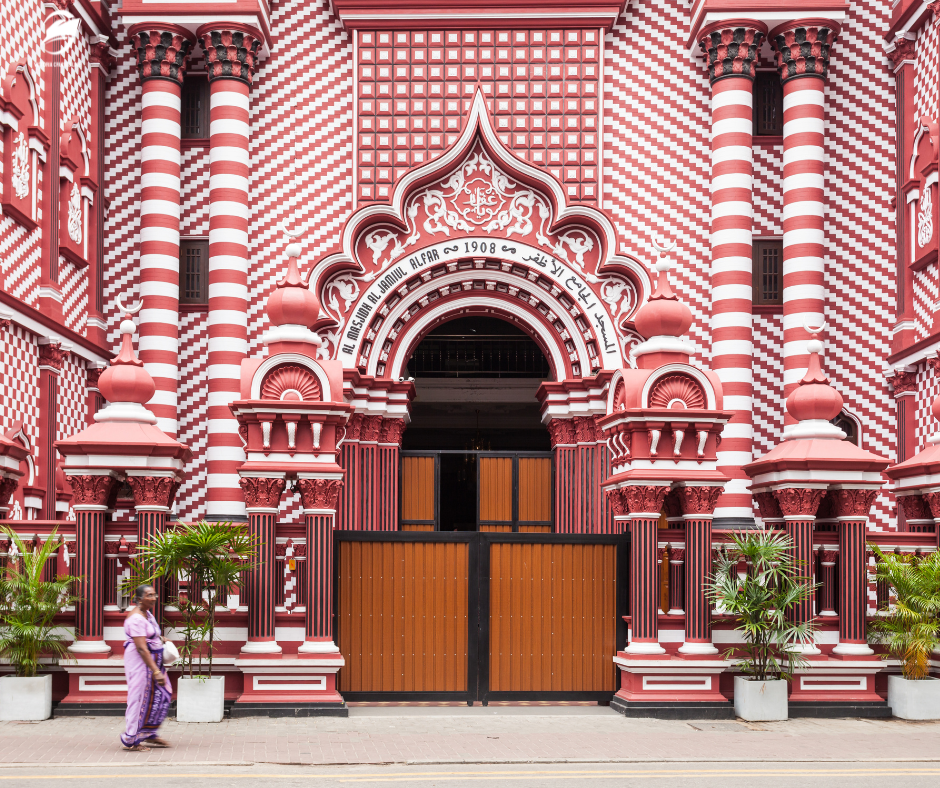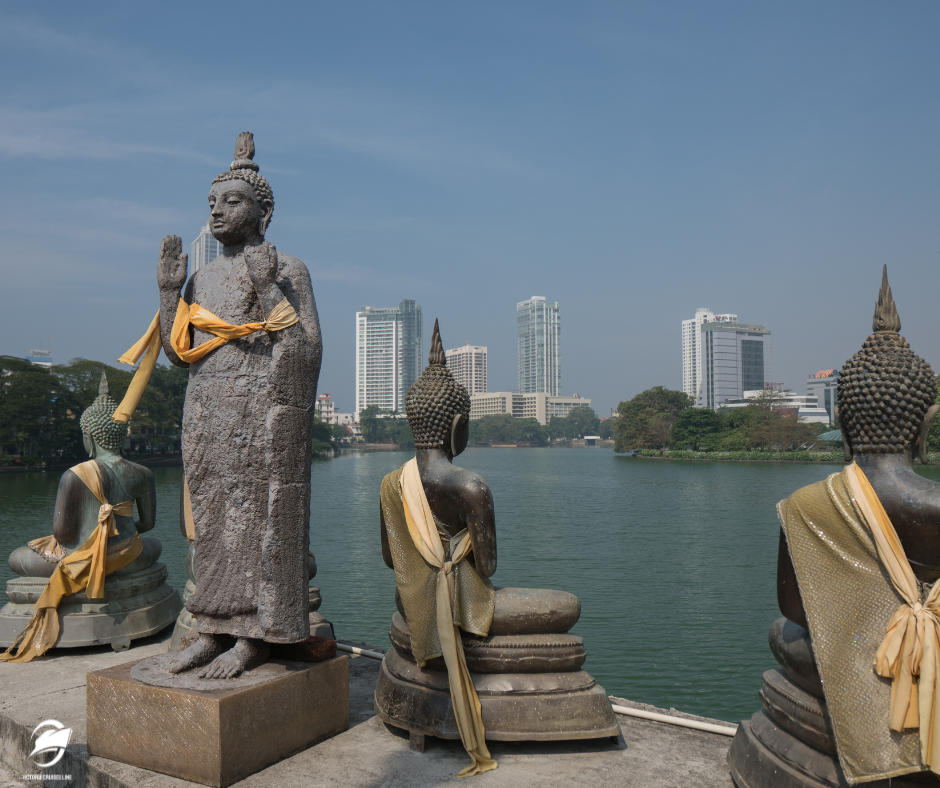Colombo, the capital of Sri Lanka, the stunning pearl of the Indian Ocean, was once known as Ceylon. This large, vibrant cosmopolitan city with 5.6 million inhabitants showcases an ethnically diverse population where various religions are practiced, even though Sri Lanka is officially a Buddhist country. Around 70.2% of Sri Lankans are Buddhist, 12.6% Hindu, 9.7% Muslim, and 7.4% Christian. Therefore, you will find numerous religious sites all over the country, and Colombo is no exception! Beautiful mosques, magnificent temples, and charming churches await visitors in this exciting metropolis, Sri Lanka’s primary gateway, where tropical climate, historical heritage, and dynamic urban life all coexist. A three-day stay at the port of Colombo aboard the Victorian Residential Ship provides a unique opportunity to explore the city’s hidden gems, colonial era relics, religious centers, and bustling markets.

Sri Lanka has its own currency – the Sri Lankan Rupee. It is recommended to carry cash at all times, as card payment is not always an option.
street-food-tasting-on-rooftop-bar
the-true-essence-of-colombo-highlights-hidden-gems
History
Colombo’s history spans thousands of years, with its most significant chapters linked to the colonial period. In the 16th century, the Portuguese were the first to arrive, followed by the Dutch and the British who colonized the area. Under British rule, Colombo became the main port of the island, then known as Ceylon, establishing it as an economic and commercial center. Independence came in 1948, and since then, Colombo has developed into a thriving city where modern skyscrapers blend with old colonial buildings.
3 Days in Colombo: Sights and Highlights
Day 1: Temples and History
On the first day, immerse yourself in Colombo’s rich religious and historical heritage. Begin with a visit to the Gangaramaya Temple, the city’s most important Buddhist shrine. This temple is an architectural fusion that showcases beautiful Buddha statues and antiquities. Next, visit the Seema Malaka Temple, which floats on the edge of the Beira Lake, offering a serene escape.

In the afternoon, head to the Pettah Bazaar, Colombo’s busiest market. Each narrow street of the market offers different products, so get lost here and see what you can find! Even if you don’t plan to buy anything, it’s a must-visit place in Colombo. For food lovers, it’s a paradise, with many street vendors offering fresh fruits, vegetables, juices, and traditional Sri Lankan treats such as kottu roti and samosas. The Khan Clock Tower was built by two Indian brothers as a symbol of gratitude and in memory of their father, Framijee Bhikhajee Khan, a Parsi businessman from Bombay. Built in January 1923, on the 45th anniversary of his death, the Khan Clock Tower is a popular landmark marking the entrance to the Pettah Bazaar.

At the heart of the Pettah Market, you will find one of Colombo’s most important and visited landmarks, the Jami Ul Alfar Mosque. Also known as the Red Mosque, it features majestic and distinctive red-and-white minarets and domes that make it truly stand out! Built in 1909, it’s one of Colombo’s oldest mosques.

Day 2: Exploring Colombo’s History and Culture
Start the day by visiting the National Museum of Sri Lanka, where you can get a fascinating insight into the island’s history and rich culture. The museum displays Buddhist artworks, royal thrones, and other historical artifacts that highlight the country’s past.
Continue your day with a relaxing stroll in Viharamahadevi Park, Colombo’s largest green space. This park is the perfect place to relax and recharge amidst the city’s hustle and bustle.
Then, explore the Fort area, built by the Portuguese in the 16th century. Although much of the original walls are gone, remnants of the Fort, such as the Delft Gate, remain and offer a glimpse into historical military fortifications and the city’s history.

Visit the Beira Lake, which served as an artificial lake during the Portuguese colonial period for the city’s protection. Today, modern businesses surround the lake, but it retains its tranquil, green waters, making it a unique attraction in the city.

Near the lake, you’ll find the Gangaramaya Temple, one of Colombo’s most significant Buddhist temples. Built in the late 1800s, this temple uniquely blends modern and traditional architectural styles and captivates every visitor with its special atmosphere.
End your day by visiting the Lotus Tower. This 350-meter-tall tower is one of Colombo’s most recognized landmarks and the tallest freestanding structure in South Asia. Inspired by the lotus flower, the building symbolizes purity and Sri Lanka’s thriving development, offering a breathtaking view of the city.

Day 3: Beach and Colonial Heritage
Dedicate your last day to exploring Colombo’s coastal and colonial heritage. Start with a leisurely morning walk along Galle Face Green, a vast seaside promenade. Here, you can watch locals flying kites or simply enjoy the view of the Indian Ocean.

Then, visit Mount Lavinia Beach, where white sandy shores and a calm oceanfront await. Nearby, you’ll find the famous Mount Lavinia Hotel, which was converted from an old colonial mansion, offering a stunning view of the ocean. Having a coffee or tea here is the perfect way to conclude your trip.
Ceylon – The Land of Tea and Spices
Sri Lanka, once known as Ceylon, is renowned for its world-famous Ceylon tea, which you can read more about here: READ MORE.

The island’s ideal climate allows tea plantations to thrive, and visitors often buy high-quality black tea as a gift.
TIP: shore-excursion-from-colombo-port-ceylon-tea-experience
Additionally, Ceylon is famous for its spices, particularly cinnamon, which the country produces at one of the highest qualities. Our blog about this can be found and read READ MORE.

In Colombo, you’ll find many places to buy tea, spices, and exotic foods that reflect the island’s rich gastronomic culture.
Colombo is a city that perfectly blends modernity with historical values. In three days, you can explore the city’s temples, historical sites, and vibrant markets while getting to know Sri Lanka’s rich cultural heritage. Relaxing on the Victorian Residential Ship at the end of each day guarantees unforgettable experiences to take home. Colombo is truly a place where every traveler can find a unique experience.


